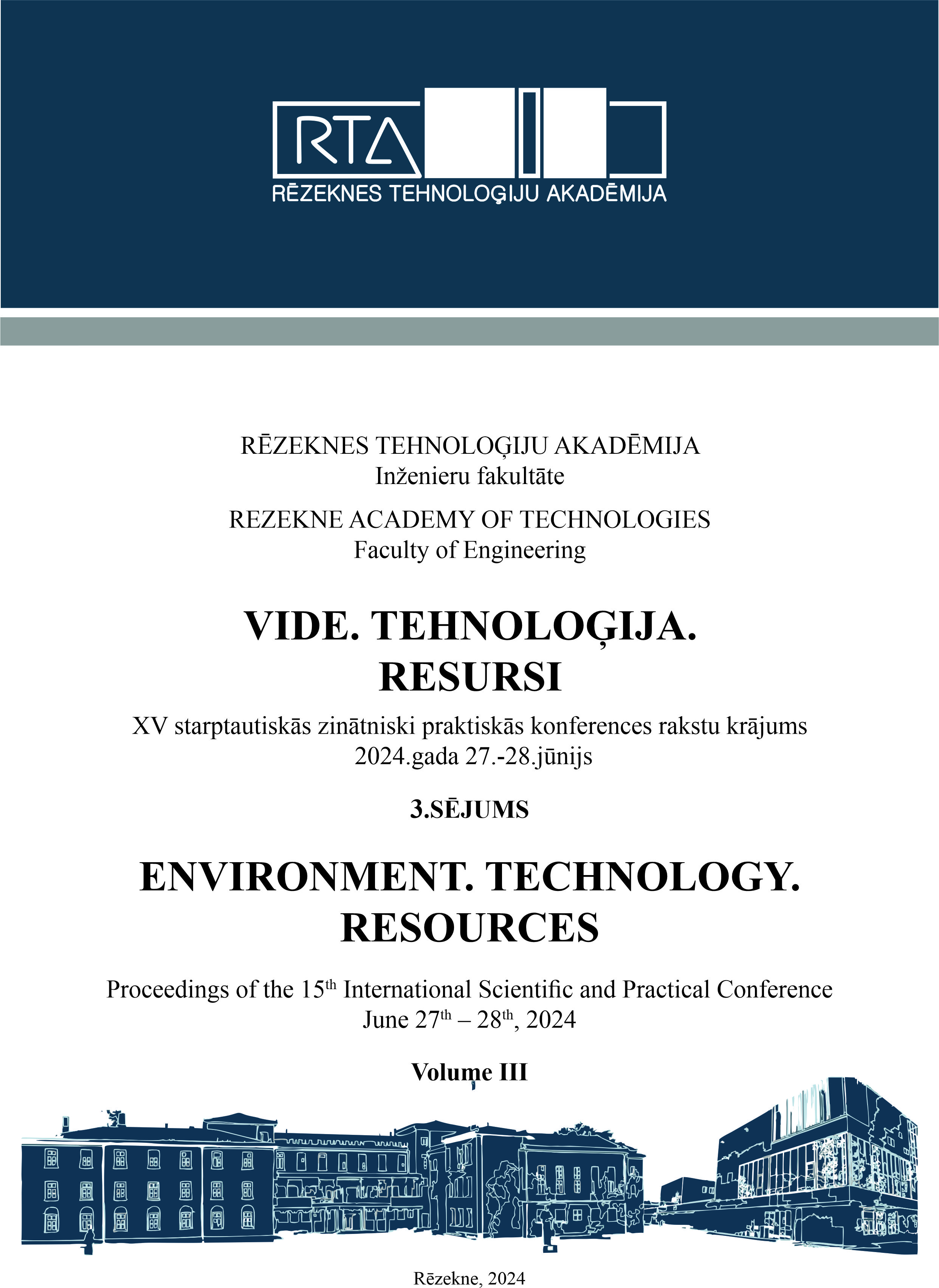RECYCLING OF TEXTILE WASTE INTO SOUND-ABSORBING ACOUSTIC PLATES
DOI:
https://doi.org/10.17770/etr2024vol3.8133Keywords:
Circular economy, Sound-absorbing materials, Sustainable textile, Waste recyclingAbstract
The textile waste problem is a significant concern both in Latvia and globally. The textile industry, particularly the fashion industry, is considered one of the most polluting industries, generating a substantial amount of waste. Worldwide, the production of textiles has been on the rise due to population growth and increased consumption, leading to a significant increase in textile waste generation. The management of textile waste is crucial for ensuring sustainability and minimizing environmental impacts. Recycling and reusing textile waste are essential strategies for implementing a circular economy model and reducing the environmental hazards associated with textile production and disposal. One way we can reduce the amount of textile waste in landfills is to create new products from this waste by intercepting it before it ends up in landfills. The aim of this study is to develop sound-absorbing acoustic plates using textile waste. Experiments with textile waste started in January 2024, beginning with the acquisition of textile waste. The textile obtained for the experiment was sourced from the waste management company in Latvia's North Vidzeme, which collects clean textile waste from residents. In the next stages, textile waste was shredded, and slabs were formed using a compactor. Textile processing into a finer fraction was carried out using an industrial shredding machine. A mixture of water-based glue, an isotonic solution (containing boric acid and sodium borate), PVA glue, and sodium bicarbonate was used as a binder for making the plates. The created plates were tested for acoustic properties in the laboratory. The absorption coefficient of the acoustic plate at the best performance level (1250 - 3500 Hz) ranged from 1.14 to 1.6. This is consistent with the fact that non-separated textiles were used.
Downloads
References
M. Shamsuzzaman, I. Hossain, T. Saha, A. Roy, D. Das, M. T. Ahmed and S. K. Podder, Waste Management in Textile Industry. Advanced Technology in Textiles, 2023, pp. 279-299.
S. Vėjelis, S Vaitkus, A. Kremensas, A. Kairytė and J. Šeputytė-Jucikė, Reuse of Textile Waste in the Production of Sound Absorption Boards, Materials, 2023, vol. 16, issue 5.
M. N. Pervez, M. I. H. Mondal, Y. Cai, Y. Zhao and V. Naddeo, 21 - Textile waste management and environmental concerns. Fundamentals of Natural Fibres and Textiles, The Textile Institute Book Series, 2021, pp. 719-739
M. L. Tummino, A. Varesano, G. Copani and C. Vineis, A Glance at Novel Materials, from the Textile World to Environmental Remediation. Journal of Polymers and the Environment, 2023, vol. 31, pp. 2826-2854.
F. Salazar-Fierro, C. Luza1, M. Revelo and J. Castañeda, Noise Pollution Control using Internet of Things (IoT) solutions. Innovation & Development in Engineering and Applied Science, 2023, vol. 5, issue 1.
S. Medved, Building Acoustics and Noise Control in Buildings. Building Physics, 2022, pp. 331-406.
M. Ličanin, D. Mihajlov, M. Praščević, A. Đorđević, M. Raos and N. Živković, Solution of the Environmental Noise Problem Generated by HVAC Systems – Case Study. Acoustics and Vibration of Mechanical Structures – AVMS 2019, 2020, pp. 145-154.
S.V. Joshi, L.T. Drzal, A.K. Mohanty and S. Arora, Are natural fiber composites environmentally superior to glass fiber reinforced composites? Composites Part A: Applied Science and Manufacturing, 2004, vol. 35, issue 3, pp. 371-376.
W. T. Hesterberg and G. A. Hart, Synthetic Vitreous Fibers: A Review of Toxicology Research and Its Impact on Hazard Classification. Critical Reviews in Toxicology, 2008, vol. 31, issue 1, pp. 1-53.
Gesellschaft für Akustikforschung Dresden mbH, Impedance tube AcoustiTube, Available: https://www.akustikforschung.de/en/produkte/messgerate/impedanzrohr-acoustitube/ [Accessed march 14, 2024].
J. Sikora and J. Turkiewicz, Sound Absorption Coefficients of Granular Materials. Mechanics and Control, 2010, Vol. 29, pp. 149-157.
Rockwool Ltd, Absorption Coefficients of Rockwool Slabs. Technical Sales Department., Pencoed, Bridgend. Available: https://www.rockwool.com/north-america/products-and-applications/products/afb/#Tools,Guides&Downloads [Accessed march 14, 2024].
R.Ružickij, S. Vasarevičius, T. Januševičius, R. Grubliauskas, The Reuse Method of Waste Tyre Textile Fibers for Sound Absorption Applications. 2022 International Conference and Utility Exhibition on Energy, Environment and Climate Change (ICUE), Pattaya, Thailand, 2022, pp. 1-7
Downloads
Published
Issue
Section
License
Copyright (c) 2024 Kristaps Siltumens, Inga Grinfelde, Ginters Znots, Rudolfs Golubovs, Raitis Brencis

This work is licensed under a Creative Commons Attribution 4.0 International License.



